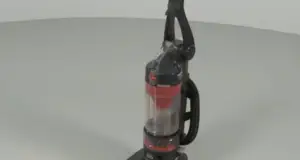Making A Vacuum Form Mold
How To Make A Vacuum Form Mold? Many household items, such as containers, tubs, sink units, and electrical enclosures, are made by vacuum forming moulds. Vacuum forming is when you heat a sheet of plastic and press it over a form to make a part. For low-volume manufacturing or prototyping, 3D printing is a great way to create low-cost moulds
What Supplies Do You Need To Make A Vacuum Form Mold
- The vacuum forming machine
- Plastic sheets used for vacuum forming
- 3D printed mould
- Mold mounting fixture
- Cutting tool
- Eye protection
- Heat resistant gloves
The Making Of A Vacuum Form Mold
You can use an industrial vacuum forming machine to achieve the desired mould. Homemade vacuum forming machines are also an option. Depending on how fast you work, it might take you about an hour to complete this process.
Step 1. Gather Your Mold
To vacuum form, you will need a mould around which you can form the vacuum. The final piece will be a near-exact copy of the mould. Download moulds from sites like GrabCAD, but you can decide to design your own.
When designing moulds for vacuum forming, it is important to consider drafting angles as part of the design process. The drafting angles allow you to remove the mould’s moulded part. On any vertical surface, they should be 3-5 degrees away from 90 degrees.
Step 2. Prepare The Model And Print It
Some print settings need to consider when preparing a model for vacuum forming in a printer.
Try to print your model with four shells at 25% infill. When you are ready, print it. Make the mould stronger by increasing the shell settings and infill settings. It will withstand the pressure when forming a vacuum.
Step 3. Prepare The Mounting Fixture To Make A Vacuum Form Mold
To secure the mould to another fixture, use an industrial vacuum forming machine. In this way, the mould remains in place when you operate the machine regardless of the forces that occur.
Attach your printer to a small plate or MDF board by drilling or tapping holes on the underside of your printer.
Step 4. Load The Plastic To Make A Vacuum Form Mold
When choosing plastic sheets for vacuum forming, it is essential to take into account the plastic’s thickness as well as the sheet’s size. Using thicker sheets will require a higher vacuum power and a higher heating temperature.
Step 5. Heat Plastic To The Desired Temperature
A vacuum forming machine heats plastics based on the type of plastic, thickness and density of the material.
Although 400 degrees Fahrenheit is close to the melting point of PLA, the sheet is only heated and not the form. Due to this, heat is not necessarily an issue in low volume production or a prototyping process.
If your vacuum forming machine does not produce large amounts of consistent heat or suction, then you should choose thinner sheets of plastic. In most cases, plastics heat at a temperature of about 400 degrees Fahrenheit.
Step 6. Press The Plastic Over The Form
As soon as the plastic heats, it pushes over the form. By this time, you will observe that the vacuum suction will have pulled out all of the air from underneath the heated plastic sheet and forces it down on the mould. Instantly, the plastic will begin to cool.
Step 7. Allow The Plastic To Cool
As soon as all of the air purges, from underneath the plastic. The plastic forms over the mould, you can remove the formed part and set it aside to cool. It is not necessary to remove the mould from the machine between shots.
Step 8. Repeat The Process
It is possible to repeat this process to obtain many products that you desire. You may need to print another mould if you notice that your 3D printed model has become deformed over time. Printing moulds is an inexpensive option for mould production, so producing 2-3 spares upfront does not take long or cost much.
Step 9. The Post Processing
You should then cut away any excess plastic once you have made the desired number of parts. You can remove spare plastic with a manual cutting tool or with a CNC. When you’re using a CNC, 3D printing is a good solution for creating custom fixtures.
Conclusion
We hope this guide is helpful and informative to you as you make vacuum forms into moulds. Whether you have done it before or not, it is very easy to do. Using this method, you can make many successful vacuum-formed plastic sheets.




